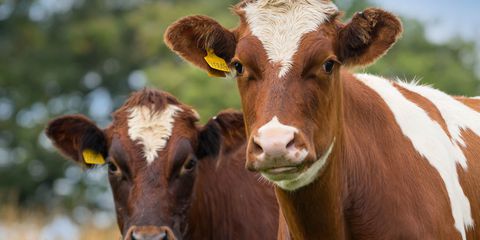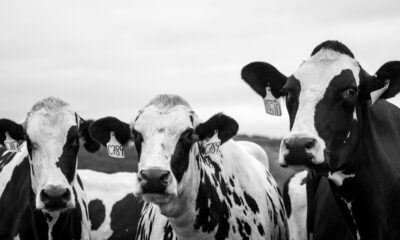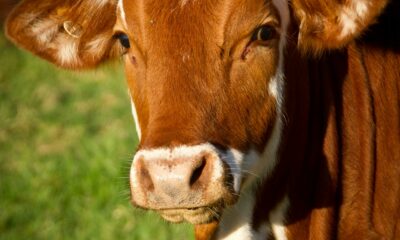Business
“No Way Out”: How Foot-and-Mouth Disease Is Choking South Africa’s Feedlots

Farmers are stuck with cattle they can’t sell, meat prices are swinging wildly, and the country’s red meat sector is under pressure like never before.
At a dusty feedlot in Limpopo, cattle crowd the pens, healthy, fed, and ready for market. But there’s a problem. These animals aren’t going anywhere.
That’s the harsh reality facing many of South Africa’s feedlot owners right now as foot-and-mouth disease (FMD) continues to spread through parts of the country. The outbreak, which has been lingering for months, is no longer just a veterinary crisis, it’s an economic one. And feedlots, the backbone of the red meat supply chain, are feeling the squeeze from every direction.
From Farm to Nowhere
“Cattle are ready to be sold. But the gates are closed,” says Dewald Olivier, CEO of Red Meat Industry Services. With strict movement controls in place to contain the virus, many feedlots in FMD-affected zones can’t transport their livestock to abattoirs. No movement means no slaughter. No slaughter means no sales.
“This has created a serious backlog,” Olivier explains. “Animals are piling up in feedlots with nowhere to go. And the longer they stay, the more it costs farmers to feed and manage them.”
The Hidden Cost: Biosecurity and Broken Cash Flow
On top of lost sales, feedlots are being forced to ramp up costly biosecurity protocols. That means segregating animals, constantly sanitising facilities, and hiring vets for ongoing health checks. It’s a full-time battle to keep the virus out or at least contained.
And all of this comes with a steep price tag.
“Cash flow is collapsing for some operations,” Olivier says. “They’ve got the product, but not the market. It’s like having gold you can’t trade.”
The Meat Price Puzzle
While national supermarket shelves still have beef in stock, for now there’s a growing imbalance in how red meat is priced and accessed.
“Retailers have managed to maintain supply at a national level, but locally it’s a mess,” Olivier explains. In FMD-hit provinces, oversupply has pushed prices down. In others, scarcity is nudging them up.
So, depending on where you live, you could be paying more for steak or watching farmers sell it at a loss.
A Patchy Response
Last week, Agriculture Minister John Steenhuisen announced that mass vaccination had begun in Gauteng. With R43 million set aside, the first 900,000 doses have arrived, and more are expected. It’s a promising start, but is it enough?
Olivier’s take? “Partially effective,” he says. The problem isn’t just vaccines. It’s the system. “The response has been hamstrung by fragmented leadership and weak coordination across departments and provinces. Everyone’s doing their own thing.”
In the agricultural community, frustration is growing. “We can’t keep reacting to these outbreaks. We need proactive planning, stronger partnerships, and more consistent national leadership,” says one cattle producer from North West.
Neighbouring Countries Close Their Doors
The crisis hasn’t just hit local farmers. Export bans are further cutting feedlots out of critical markets. Zimbabwe, Namibia, Botswana, and China have all suspended imports of South African meat products since the outbreak began, a blow to an already cornered industry.
For an export-driven sector, these bans are devastating. “We don’t just produce for South Africa,” says Olivier. “We feed the region.”
A Sector on the Brink
If restrictions don’t ease soon or if vaccination rollout stumbles, meat prices could spike nationally, creating a consumer crisis on top of the current producer one. Olivier warns of long-term consequences if policy doesn’t catch up.
“This isn’t just about today’s steak,” he says. “It’s about the future of red meat in South Africa.”
Local Voices, National Stakes
On social media, concern is mounting. Farmers are sharing photos of overcrowded pens, frustrated workers, and unsold cattle. Consumers, meanwhile, are questioning the swings in meat prices between cities and rural towns. Many are asking: why is there no unified approach?
For now, the answer remains as murky as the disease’s path. But one thing is clear, South Africa’s feedlot sector is at breaking point, and the rest of the country may soon feel the ripple effects on both dinner plates and grocery bills.
Foot-and-mouth disease isn’t just a rural issue. It’s affecting the price of meat, the viability of farms, and the future of one of South Africa’s most vital food industries. As cattle sit idle and costs soar, the call is growing louder for stronger leadership, faster vaccinations, and a national strategy that actually works.
{Source: IOL}
Follow Joburg ETC on Facebook, Twitter , TikTok and Instagram
For more News in Johannesburg, visit joburgetc.com



























